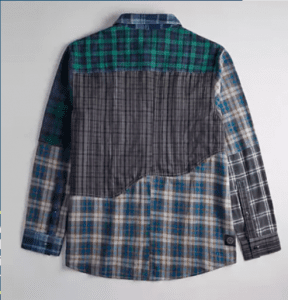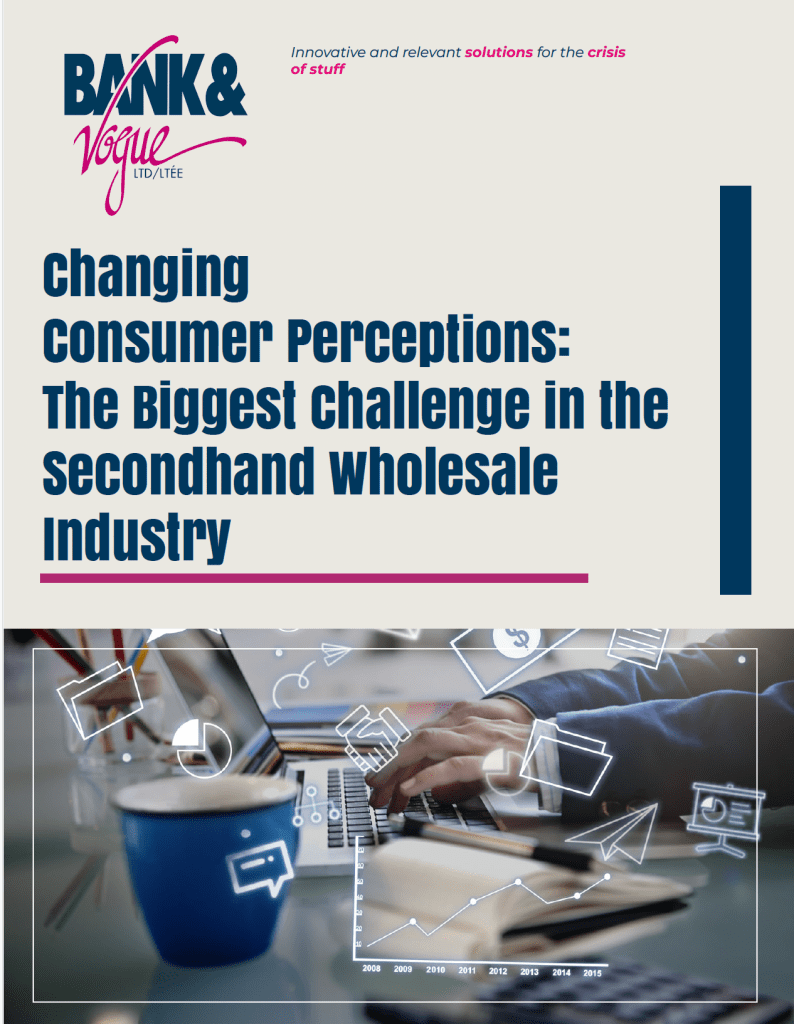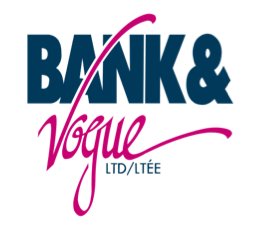Executive Summary The secondhand wholesale industry plays a pivotal role in driving sustainability within the fashion sector, offering solutions to reduce textile waste and promote circularity. Despite its growth, the industry faces a significant challenge: changing outdated consumer perceptions. Misconceptions about the cleanliness, quality, and desirability of secondhand goods hinder the sector’s ability to reach its full potential. This white paper explores the roots of these perceptions, their impact on the industry, and strategies to educate consumers, shift mindsets, and enhance adoption of secondhand fashion.
Introduction The global secondhand apparel market has grown exponentially over the past decade, driven by increased consumer demand for affordable, sustainable fashion and the adoption of circular economy principles. With projections estimating the market to reach $350 billion by 2027, it is clear that secondhand fashion is no longer a niche sector but a mainstream movement. However, one key obstacle remains: outdated consumer perceptions that secondhand clothing is inferior in quality, unclean, or unfashionable.
These perceptions not only slow consumer adoption but also challenge wholesalers, retailers, and sustainability advocates to redefine the narrative. Addressing this issue requires a collective effort across the value chain, from improving transparency to fostering consumer education.
Understanding Consumer Perceptions
Misconceptions About Secondhand Clothing Despite advancements in sorting, cleaning, and curating secondhand clothing, lingering misconceptions persist:
- Cleanliness: Consumers often associate secondhand clothes with being unsanitary.
- Quality: Many assume secondhand garments are damaged or worn out.
- Trendy Appeal: Secondhand fashion is viewed as outdated or unfashionable.
- Value: Some consumers perceive secondhand clothing as lacking long-term worth compared to new garments.
The Influence of Fast Fashion Fast fashion’s emphasis on convenience, newness, and low prices has further fueled misconceptions. Brands promote constant consumption, overshadowing the environmental and economic value of secondhand alternatives.
Cultural and Regional Attitudes Consumer attitudes toward secondhand clothing vary geographically. In some regions, it is embraced as an eco-friendly and affordable option, while in others, it carries a social stigma tied to affordability or necessity.
The Industry Impact of Misconceptions
Slower Market Adoption While the secondhand market is growing, negative perceptions slow its adoption in certain demographics and regions, limiting the industry’s reach and impact.
Missed Opportunities for Sustainability The fashion industry is responsible for 10% of global carbon emissions, and textile waste contributes significantly to landfills. Misconceptions about secondhand fashion hinder efforts to address these environmental challenges.
Pressure on Wholesalers and Retailers Wholesalers and retailers face increased pressure to educate consumers, improve quality control, and enhance the overall presentation of secondhand clothing to challenge these outdated mindsets.
Strategies to Change Consumer Perceptions
Transparency Across the Value Chain
- Education on Sorting & Cleaning Processes: Providing insights into how secondhand clothes are meticulously sorted, sanitized, and prepared for resale builds consumer confidence.
- Certifications & Quality Standards: Adopting certification systems to verify cleanliness and quality can help reinforce trust.
Redefining Value Through Storytelling
- Sharing success stories of upcycling, vintage trends, and secondhand styling helps reframe pre-owned clothing as aspirational and stylish.
- Collaborating with influencers and thought leaders in sustainable fashion amplifies the secondhand message.

Enhancing Consumer Experiences
- Curation and Presentation: Retailers and brands can improve the presentation of secondhand clothing by adopting modern displays and focusing on curated collections.
- Technology Integration: Leveraging AI and analytics to personalize recommendations, highlight sustainability impacts, and enhance shopping experiences.
Educational Campaigns
- Launching awareness initiatives that highlight the environmental benefits of secondhand clothing and its role in reducing textile waste.
- Partnering with schools, organizations, and media to educate younger generations on the value of circular fashion.
Case Studies: Success Stories in Overcoming Perceptions
Bank & Vogue, a global leader in secondhand wholesale, has redefined the industry through its commitment to transparency and quality. By focusing on meticulous sorting processes and delivering clean, high-quality clothing, Bank & Vogue has successfully built trust among retailers and consumers. Their partnerships with major brands further showcase the value of secondhand clothing in the circular economy.
Beyond Retro Beyond Retro, the retail arm of Bank & Vogue, has transformed the secondhand shopping experience by curating stylish, vintage-inspired collections that appeal to fashion-conscious consumers. Through engaging storytelling, modern store layouts, and collaborations with influencers, Beyond Retro proves that secondhand fashion can be trendy, aspirational, and desirable.
BVH Upcycling Innovations Bank & Vogue Holdings (BVH) is pioneering upcycling initiatives that challenge perceptions about secondhand textiles. By transforming pre-loved clothing into new, high-value products, BVH showcases how innovation in circular design can reduce waste and meet consumer demand for sustainable fashion. Their projects demonstrate the economic and environmental benefits of embracing secondhand materials.
The Role of Wholesalers in Shaping Perceptions As key players in the supply chain, secondhand wholesalers have a unique opportunity to:
- Invest in quality assurance processes.
- Provide clear documentation on sourcing, sorting, and cleaning practices.
- Partner with retailers and brands to create transparent communication with end consumers.
- Advocate for circular economy solutions that highlight the value of secondhand clothing.
Conclusion: The Future of Secondhand Fashion The secondhand wholesale industry holds immense potential to transform fashion consumption and reduce textile waste. Changing consumer perceptions remains the biggest challenge, but through transparency, education, and innovation, the industry can redefine the narrative.
At Bank & Vogue, we are committed to advancing the secondhand fashion industry by ensuring quality, transparency, and sustainability at every stage of the value chain. Together, we can inspire consumers to see secondhand as a solution—not just a choice.
If your business is ready to embrace the future of secondhand wholesale, Bank & Vogue is here to help. Contact us today to learn more about how we can support your sustainability goals and create value for your customers.








